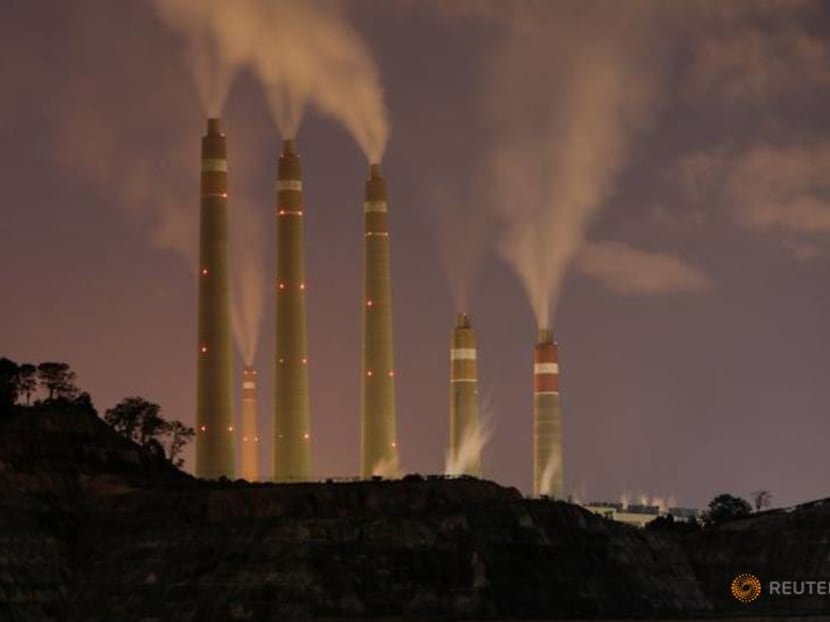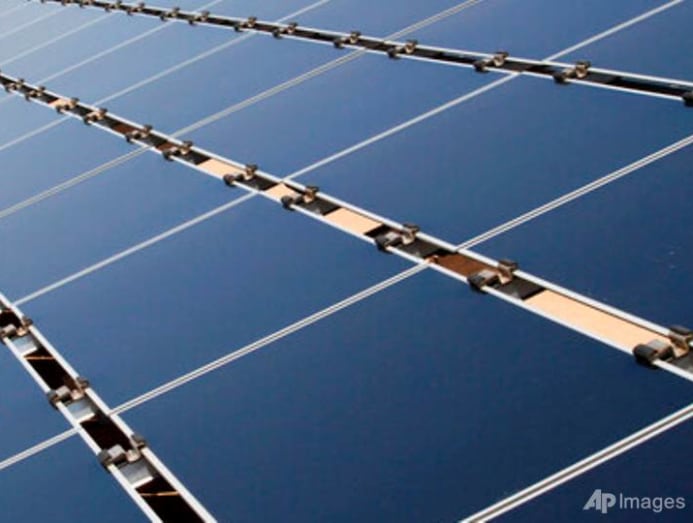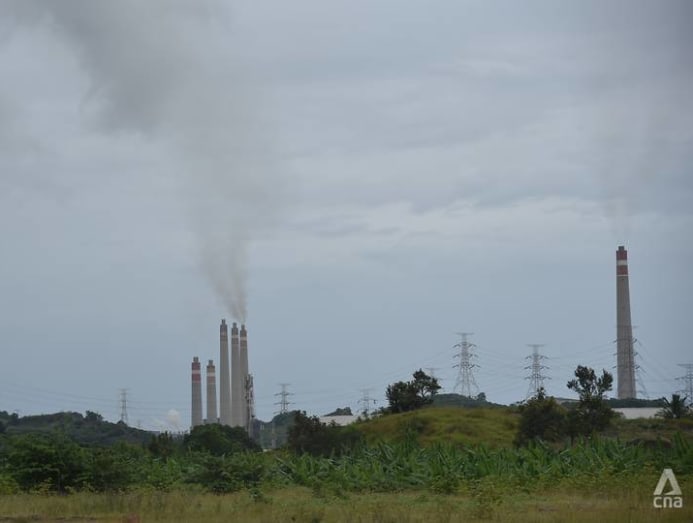commentary Commentary
Commentary: Indonesia’s coal industry is on its last legs
It’s time to put to rest the myth that using coal, which Indonesia’s economy now relies on, can be a long-term resource for the country’s energy needs, says Greenpeace's Tata Mustasya.

Smoke and steam billows from the coal-fired power plant owned by Indonesia Power, next to an area for Java 9 and 10 Coal-Fired Steam Power Plant Project in Suralaya, Banten province, Indonesia, Jul 11, 2020. (Photo: REUTERS/Willy Kurniawan)
JAKARTA: Indonesia’s coal industry is running out of options.
The pot of money for coal power is drying up. On Apr 22, South Korea announced it will no longer provide financial support for overseas coal projects. China seems to be the only country willing to provide the immense financial aid that Indonesia’s bloated coal industry needs to keep going.
East Asia has historically been the source of finance for Indonesia’s coal industry, where pro-coal market controls and state support for intensive coal mining have made fossil fuels cheap and abundant. Coal makes up almost 40 per cent of the country’s energy mix, and what’s left over is exported mostly to China.
China, South Korea and Japan account for about US$25 billion in financial support for 17.4 gigawatts of coal capacity in Indonesia.
READ: Commentary: Cooperation between US, China at global climate summit could yield significant benefits
But all three economies are making moves to cut down on coal. Before South Korea’s pledge, Japan’s major public and private banks all individually signalled an end to coal investment.
China is now seen as the only option for Indonesia’s coal sector, but even this might change. At the Leaders Summit on Climate in April, China announced it would “strictly limit” increase in coal consumption until 2025, and “phase it down” from then onwards.
Though this comes as little surprise given earlier projections China’s coal consumption would fall after 2025 as utilities and other industries peak, this was a wake-up call for Indonesia. China will not stick around forever as an investor and buyer.
(Can China make good on its climate targets? A China observer weighs in on The Climate Conversations:)
DROP IN DEMAND FOR COAL AS ENERGY RESOURCE
Politicians and businessmen argue coal allows Indonesia to be energy independent, given its domestic abundance. Because Indonesia is one of the world’s top exporters of coal, proponents claim that local coal plants do not rely on foreign governments or companies.
This ignores the financial structure Indonesia’s coal industry relies on, which is in global decline. According to the International Energy Agency, in 2020, global demand for coal fell 5 per cent from 2019 levels – the largest drop since World War II.

A short-lived rebound is expected in 2021, but with no further increase from 2021 to 2025, even as economies recover from the pandemic.
Indonesia’s oil industry also offers a cautionary tale for depleting resources and how much energy security they can provide. Once a net exporter of oil, the country now suffers severe deficits from oil imports.
While countries around the world and around Southeast Asia have made moves to diversify their national energy mix, Indonesia has doubled down on coal and neglected energy security potential in renewable energy development.
In February, the Director-General of the Ministry of Energy and Mineral Resources Dadan Kusdiana said coal lock-in is limiting space for renewable energy to grow.
READ: Commentary: Indonesia’s clean energy ambitions hit fresh obstacles
READ: Commentary: Why Indonesian farmers may become extinct in about 40 years
VIETNAM’S SOLAR SUCCESS STORY
Other countries in the region show this doesn’t have to be the case. Vietnam has been transitioning its coal-addicted energy market towards more solar energy since 2016, sparked by falling solar prices and growing environmental concerns.
Vietnam has used innovative financing mechanisms to entice developers to move into renewables. It implemented a feed-in-tariff (FIT) in 2016, which guarantees fixed prices paid to solar companies for each unit of renewable energy supplied to the power grid.
The first round of feed-in tariffs was so successful that a second FIT phase and an auction process were both introduced in 2020, indicating a maturing market.
Overall, Vietnam’s solar sector saw exponential growth by 2019 and, by 2020, its solar sector was a hub for foreign investment. The industry continued to grow by 7 per cent even when COVID-19 tanked global energy demand.

Meanwhile in Indonesia, coal exports and domestic coal consumption fell short of national targets. The sector still isn’t expected to recover until the second half of 2021.
Several studies also suggest solar energy in Vietnam created more jobs than coal across the two sectors’ respective value chains in 2020.
The contrast between Vietnam and Indonesia shows the resilience of renewables amid a global economic slump. “Renewables appear to be immune from COVID-19,” energy analyst IEA’s Executive Director Fatih Birol remarked.
READ: Commentary: Moving to net-zero may not hurt as much as we think
HOW INDONESIA CAN WEAN ITSELF OFF COAL
Indonesia right now has the largest solar energy potential in Southeast Asia and could more than double that potential if the electrical grid was better tuned to efficiently take up renewable energy.
Realising that potential requires government support followed by solid investment. Three years after Vietnam's FIT incentive programme started, its solar sector was a major destination for foreign investors; most of them from within Southeast Asia.
Meanwhile, Indonesia is isolated and may be completely reliant on Chinese investment alone. It’s time to put to rest the myth that coal will lead to any sense of security for Indonesia.
READ: Commentary: To everyone’s relief, US is back in the driver’s seat on climate change
To take the government’s foot off the neck of the domestic solar industry, Indonesia needs to create an exclusion policy for new coal and gas starting now. The country already suffers from an overcapacity of coal plants.
Next, it needs to remove price-linked subsidies for coal power to improve market development for renewable energy. To set a target that is both ambitious and realistic, Indonesia should work towards achieving 50 per cent renewables in its electricity mix by 2030, up from the current target of 23 per cent by 2025.
Indonesia’s addiction to coal puts it at the tail end of a wildly fluctuating global coal industry. It’s also unviable in a world increasingly constrained by the climate crisis.

Indonesia has set an unambitious 2070 net zero commitment, which during the Leaders Summit showed disregard for the risks associated with climate change and little foresight to advance the energy sector.
The repercussions for global emissions could be huge if Indonesia does not make the green transition faster, when the country is projected to become the world’s fourth most powerful economy by 2050. The costs of ridding its coal addiction then would be higher.
But there is still time. Indonesia’s natural renewable energy resources have the potential to become a leading destination of sustainable investment, a growing trend in global finance.
By building up its renewable energy capacity and attracting multiple investment partners, Indonesia won’t just be energy independent – it will have an independence of options.
Tata Mustasya is the Regional Climate and Energy Campaign Coordinator for Greenpeace Southeast Asia in Jakarta, Indonesia.





